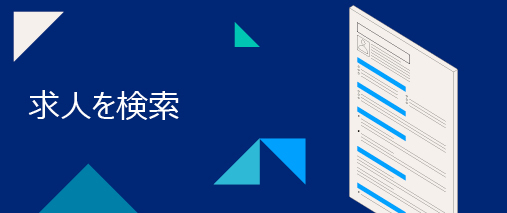INCLUSION AND DIVERSITY DURING A CRISIS? WE’VE BEEN HERE BEFORE!
Charlotte Sweeney Diversity, Inclusion and Equality Specialist

If you work in inclusion and diversity (I&D) at the moment, you’re probably concerned that years of progress could be lost within a short space of time. Senior teams are focusing on the here and now: reacting to fast-changing government advice, trying to keep day-to-day business running virtually, and attempting to salvage business as we all deal with the continued financial fall-out of the coronavirus.
During the financial crisis of 2008, I was in a senior global I&D role and I believe there are a number of parallels to draw to the situation we are currently experiencing. I learned that if you lose focus now, in the middle of the crisis, you can expect around a five-year drop off in the progress you’ve made. Many leaders at the time struggled to see why I&D could be a business enabler or would contribute towards the sustainable recovery of the business. In the meantime, those companies that kept it on the agenda and saw the value were making progress. Doing nothing now could mean your organisation doesn’t just stand still, it slips backwards.
So how can we apply some of this today? The fall out of 2008 reminded us that a great place to start is with your data. There has never been a better time to understand what your data is telling you such as who is leaving, who is working remotely, who is working long hours. How have decisions been made about placing employees on furlough, for example – has this been done in an equitable way or has it affected, say, people working part-time more than others? Has inclusive thinking been applied to decisions about possible redundancy? I&D can act as the conscience of the business here, making insights available to those making these decisions and actively becoming part of the conversation.
The last financial crisis also showed us the crucial role of employee resource groups. They can collect honest feedback from different groups about their experiences of lockdown and how they feel about their employer’s response. These conversations can give leaders an insight of the true lived experiences of diverse groups in the organisation. For example, evidence mounts on the disproportionate impact of coronavirus on ethnic minorities… How are you using those insights to identify what your organisation needs to do to support your ethnic minority communities? How are you engaging with your colleagues who have disabilities and finding out how they are experiencing this situation and their worries for the future? Without this knowledge, leaders cannot expect to engage with employees in an authentic way, understand their needs or respond to their concerns.
It’s no time to become complacent just because there is temporary financial relief available from governments. In 2008, emergency rescue packages for the car industry and financial services led to a number of organisations in those sectors standing still on diversity – and they struggled for some time to rebuild any progress they’d previously made. Maybe this is one of the many reasons that the financial services sector has a significant gender pay gap?
This isn’t just about immediate budget priorities; the actions companies take on I&D during the current climate could have huge implications for years to come. Look at how consumers have reacted to businesses that have put profit before employees’ welfare, or to billionaire leaders who asked for government bailouts or furlough support when they could arguably cover wages. Lockdown has shone a light on the levels of privilege enjoyed by some, but not by others…and that light will continue to shine as lockdown is eased. I&D can help leaders to understand that – while their personal experience of enforced working from home might be a comfortable one – many employees do not have the same technology resources, they may be sharing limited broadband and physical space with others, they may be trying to home-school at the same time.
Don’t just use your own organisation’s data, there is a host of evidence out there showing that different groups have experienced the pandemic in different ways. For all the cheerleaders saying women have ‘finally’ won the battle for flexible working, they haven’t seen the other sacrifices that are happening in the background that may actually mean women are worse off as we emerge from the crisis. For example, it recently emerged that research from female academics had plummeted during the lockdown as they juggled their career with childcare, while articles from men increased. Being evidence-led will help to demonstrate the importance of acting now to leaders as well as anticipating future challenges.
Positive change can continue to happen during a crisis, but it needs methodical and consistent action. Allowing the I&D agenda to ‘rest’ until the pandemic subsides threatens stalling the agenda at best, and forcing it into reverse at worst. Take a forensic look at your business and ask yourself (and others):
- What are the cultural impacts and barriers preventing progress on I&D? Some of these will be coronavirus-related, others may have been more deeply embedded before
- What does the data show for each element of I&D?
- How does that change when you take an intersectional approach and look at multiple elements such as the impact on black women or young people with disabilities?
- What previous actions made progress? What was it about those specific actions that created change?
- What are the patterns and links you can draw from your data? For example, what is the link between high turnover of staff and low engagement in certain groups?
In times such as this it may be tempting to focus on actions and ‘initiatives’ that gain publicity or to do something because another company or competitor is – these approaches are rarely sustainable and do not demonstrate your commitment to creating a truly diverse and inclusive workplace.
Surveys show that I&D professionals worry for the future of the function as budgets are squeezed once we return to ‘normal’, whatever that is. We’ve been through challenges before, and the best thing we can do is keep pushing ahead, revising our course based on the evidence in front of us and demonstrating the positive impact I&D has on the future of any organisation.
This blog was originally published on LinkedIn.
AUTHOR
 Charlotte Sweeney OBE has specialised in Inclusion & Diversity (I&D) for over 20 years and was recognised by The Economist and The Daily Telegraph as one of the Top 10 I&D Professional Consultancies in the world. She runs a consultancy specialising in I&D strategy and their effective and sustainable implementation. Her clients include many well-known global companies from many sectors and gained much of her global experience leading I&D in a number of companies in both Retail and Investment Banking. In 2014 she authored an independent review for the UK Government Secretary of State Dr. Vince Cable on Women on Boards and Executive Search Firms and is the co-author of the Financial Times published book ‘Inclusive Leadership – the definitive guide to developing and executing an impactful Diversity and Inclusion Strategy, locally and globally’, which was shortlisted for Management Book of the Year by The Chartered Management Institute (CMI) in 2018. She has held a number of Non-Executive Director roles on a number of boards, including 4 years as a Deputy Chair of an NHS Acute Trust with responsibility of over £500m annual spend. She was recognised in the New Year’s Honours 2017 list with an Officer of the British Empire (OBE) for her services to Women and Equalities.
Charlotte Sweeney OBE has specialised in Inclusion & Diversity (I&D) for over 20 years and was recognised by The Economist and The Daily Telegraph as one of the Top 10 I&D Professional Consultancies in the world. She runs a consultancy specialising in I&D strategy and their effective and sustainable implementation. Her clients include many well-known global companies from many sectors and gained much of her global experience leading I&D in a number of companies in both Retail and Investment Banking. In 2014 she authored an independent review for the UK Government Secretary of State Dr. Vince Cable on Women on Boards and Executive Search Firms and is the co-author of the Financial Times published book ‘Inclusive Leadership – the definitive guide to developing and executing an impactful Diversity and Inclusion Strategy, locally and globally’, which was shortlisted for Management Book of the Year by The Chartered Management Institute (CMI) in 2018. She has held a number of Non-Executive Director roles on a number of boards, including 4 years as a Deputy Chair of an NHS Acute Trust with responsibility of over £500m annual spend. She was recognised in the New Year’s Honours 2017 list with an Officer of the British Empire (OBE) for her services to Women and Equalities.

転職をお考えですか?こちらから仕事を検索



